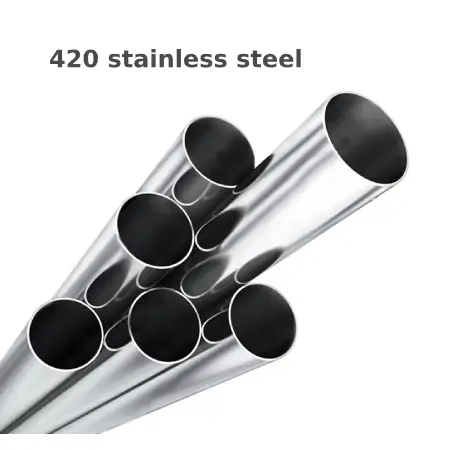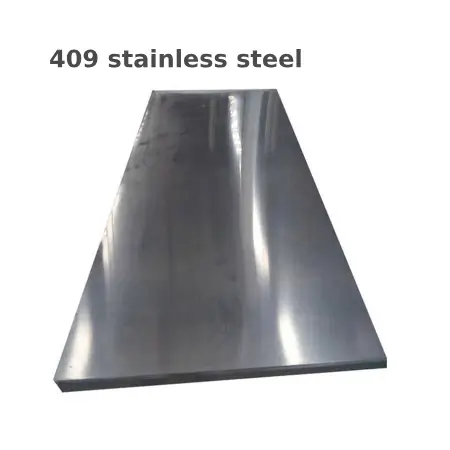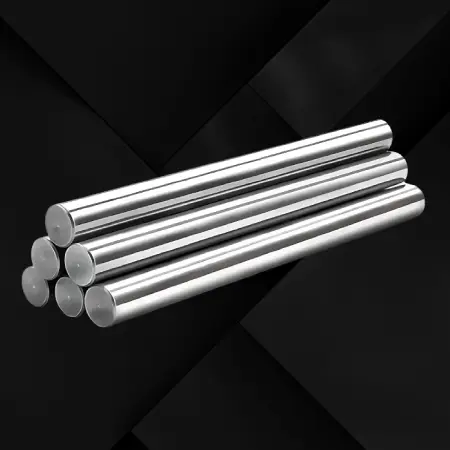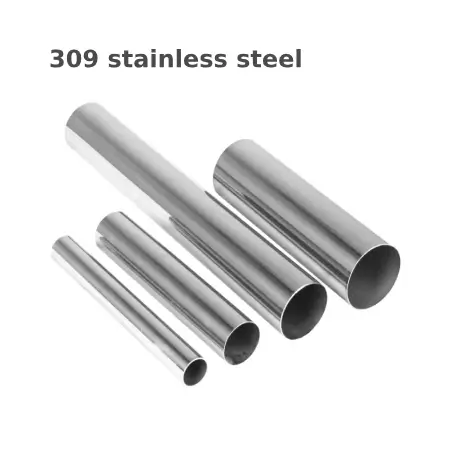420 Stainless steel is a category of martensitic and precipitation-hardening stainless steels known for their high performance and ability to be heat-treated to achieve high levels of hardness. The 420 grade comes in several variations, with 420 being the most widely recognized.
Introduction to 420 Stainless Steel
Material Composition: 420 Stainless steel contains a minimum of 13.5% chromium and is known for its higher carbon content compared to other stainless steel grades, which allows for heat treatment and significant hardness improvements.
Strength: With increased carbon levels, 420 stainless steel can achieve higher tensile and yield strengths after heat treatment—hardness values exceeding 50 on the Rockwell C scale can be reached.
Hardness and Wear Resistance: It is used in applications that require high hardness and wear resistance, such as knives, blades, and other cutting tools, as well as pumps and valves.
Applications: Common applications include tool blades, cutlery, tap and die sets, valves, pumps, and other high-wear components where hardness and strength are critical.
Heat Treatment: Stainless steel 420 can be hardened through a quench and temper heat treatment process, which allows the material to reach its peak hardness.
Corrosion Resistance: While it provides good resistance to oxidation and some corrosive environments, it is not as resistant to corrosion as some of the more widely used stainless steel grades like 304 or 316. Its corrosion resistance can be compromised in the highly heat-treated state if the material is subjected to aggressive environments.
Chemical Behavior: 420 grades can be prone to corrosion if not properly heat-treated, as the process of reaching high hardness can lead to a reduction in overall chromium content at the surface.
Machinability: It is relatively easy to machine before heat treatment due to its annealed form. However, once hardened, the material becomes more challenging to work with and requires specialized tools and techniques.
Recyclability: Like all stainless steels, 420 can be recycled without degradation of its properties, making it an environmentally friendly material choice.
Grade Variations: There are various grades within the 420 category that differ based on carbon content. For example, 420F is a high carbon version with increased wear resistance, and 420C (also known as F72) is intermediate in carbon content, suitable for certain applications where corrosion resistance and hardenability are a balance.
Precautions: Given the material's high hardenability and high carbon content, proper heat treatment and fabrication practices are essential to avoid embrittlement and to maintain dimensional stability.
420 Stainless steel is a popular choice for situations where a combination of high hardness, wear resistance, and strength is required. Careful selection and processing are key to utilizing the material's properties effectively while maintaining its integrity and performance.






